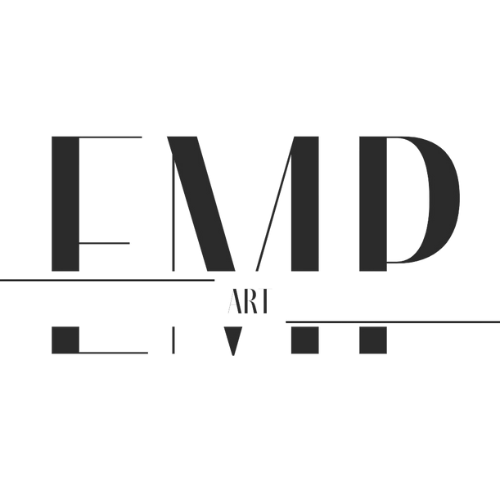The History of Abstract Art: A Short, Inspired Overview
Abstract art may feel like a modern phenomenon, but its roots stretch deep into the human story — across continents, cultures, and centuries.
It is one of the most radical, liberating, and deeply personal evolutions in art history: a shift from representation to feeling, from form to freedom.
In this blog, I’ll share a short but inspired overview of abstract art’s history, how it emerged, and why it continues to shape artists like me at EMP today.
What Is Abstract Art?
At its core, abstract art moves away from literal representation.
Instead of depicting objects, people, or places realistically, abstraction explores form, color, movement, and emotion as subjects in themselves.
There are two main forms:
Abstracted: Rooted in recognizable objects but simplified or distorted
Non-objective: Created entirely from imagination or feeling, with no reference to external reality
Both approaches share the same goal:
To express what lives beneath the surface — emotion, energy, intuition — in visual form.
Early Origins: Abstraction Before It Had a Name
While abstract art is often associated with the 20th century, its spirit existed long before that.
Indigenous art, including sand paintings, textiles, and ceremonial symbols, often conveyed emotion and meaning through geometry and repetition.
Islamic art used intricate pattern and abstraction to reflect spiritual truths.
Asian brushwork focused on energy, gesture, and empty space — the feeling of movement, not just the subject itself.
These traditions laid the emotional and philosophical groundwork for what modern abstract artists would eventually name and explore more formally.
The Modern Movement Begins (Early 1900s)
The early 20th century was a time of massive cultural upheaval — industrialization, world wars, new technology, and a reshaping of how people understood reality.
Artists began asking:
What if art didn’t have to “look like something”?
What if color, line, and shape could be enough?
Key Figures:
Wassily Kandinsky (Russia): Often credited with the first truly abstract painting. He saw art as a way to express spiritual vibrations through color and form.
Kazimir Malevich (Russia): His famous Black Square rejected all visual reference, inviting viewers to experience art as pure feeling.
Hilma af Klint (Sweden): A mystic and visionary whose abstract works predated Kandinsky’s, but were largely unknown during her lifetime. Her work is now seen as a spiritual foundation of the movement.
These artists opened the door to a new visual language — one that celebrated the invisible and the inner world.
Abstraction Expands Across the World (Mid–20th Century)
After World War II, abstract art became the dominant language of modern art — especially in the United States.
Abstract Expressionism (1940s–60s)
A deeply emotional, often large-scale movement centered in New York
Artists like Jackson Pollock, Mark Rothko, and Joan Mitchell emphasized the process of painting as part of the meaning
Works often felt like emotional landscapes — full of gesture, energy, and soul
This movement deeply influences my own work at EMP: the belief that painting can be an act of release, feeling, and transformation.
Color Field Painting & Minimalism (1950s–70s)
Artists like Helen Frankenthaler and Ellsworth Kelly focused on color, space, and purity
Abstraction became a conversation about emotion through stillness, simplicity, and form
This era taught us that even a single color field could be powerful — if filled with intention.
Contemporary Abstraction: Today and Beyond
Today, abstraction continues to evolve — and remains one of the most powerful tools for emotional and intuitive expression.
Contemporary artists use abstraction to:
Explore identity, memory, and trauma
Blend digital and traditional mediums
Reclaim space for underrepresented voices
Create immersive installations and sensory experiences
At EMP, I see myself as part of this evolving lineage — not imitating the past, but honoring it by continuing to create from feeling, energy, and truth.
Why Abstract Art Still Matters
Across every era, abstraction has done something vital:
It has reminded us that what is felt is just as important as what is seen.
That complexity, contradiction, and mystery are worthy of expression.
That you don’t have to explain everything to have it mean something.
Abstract art matters because it honors the unseen.
Because it invites presence.
Because it trusts the viewer to bring their own meaning.
